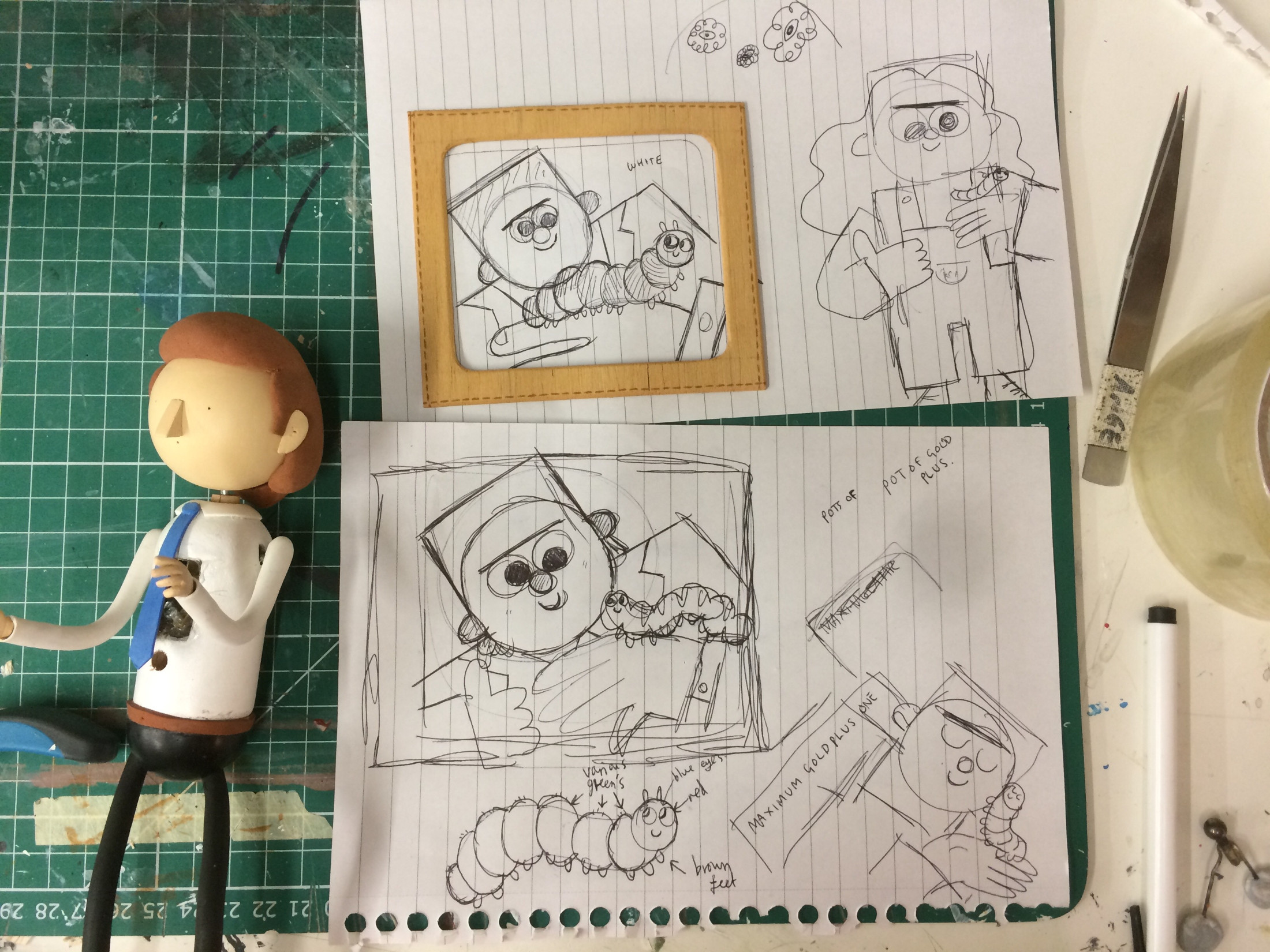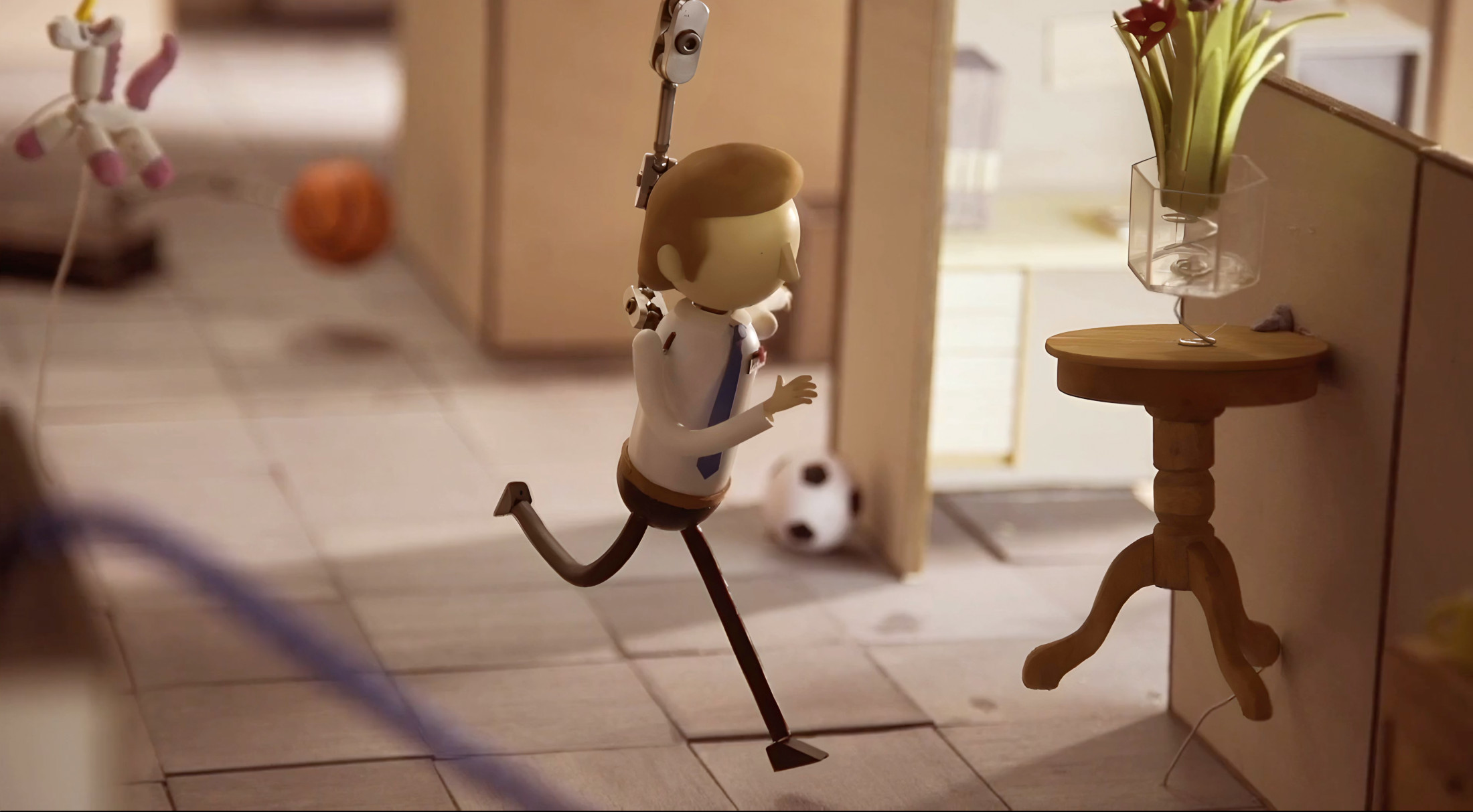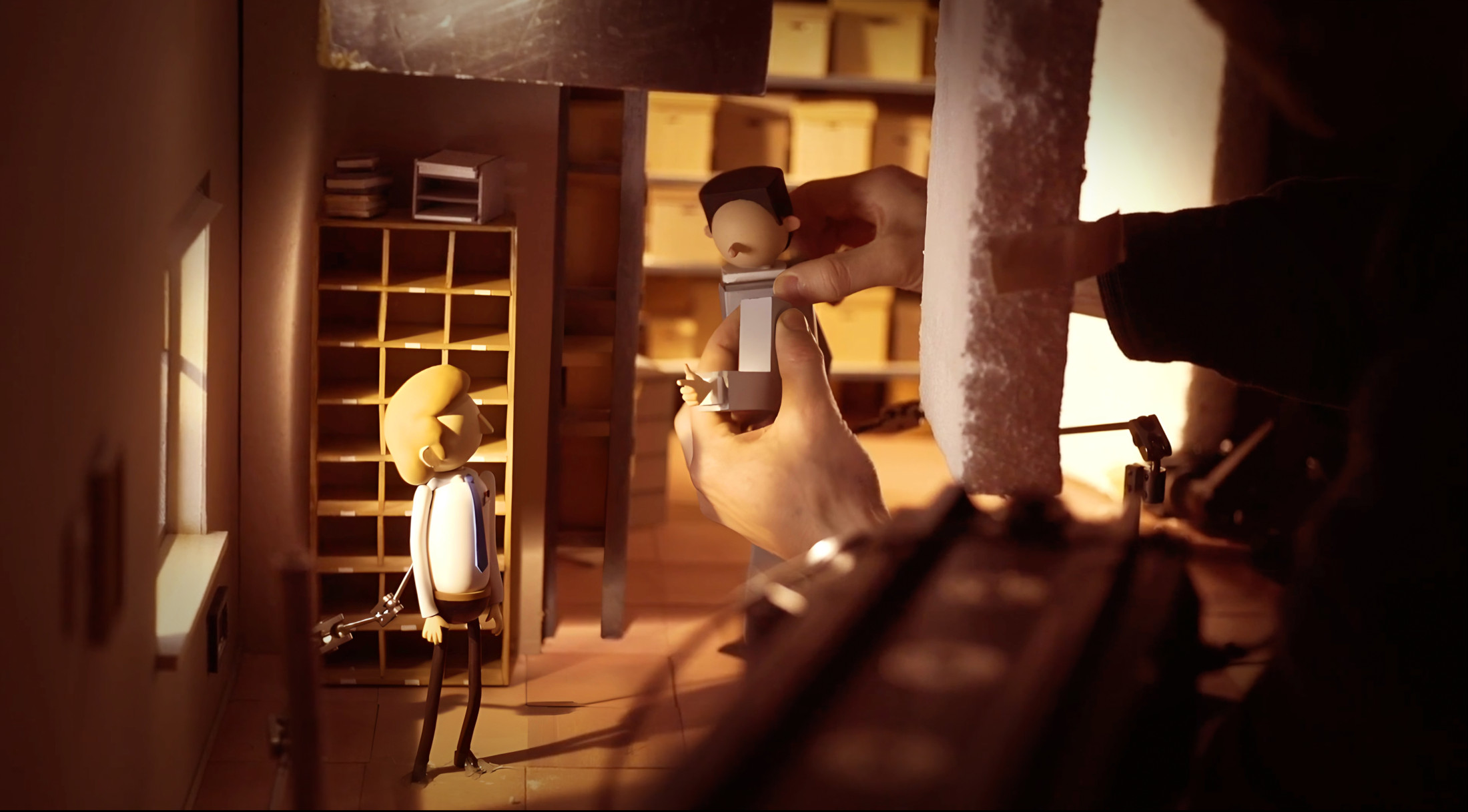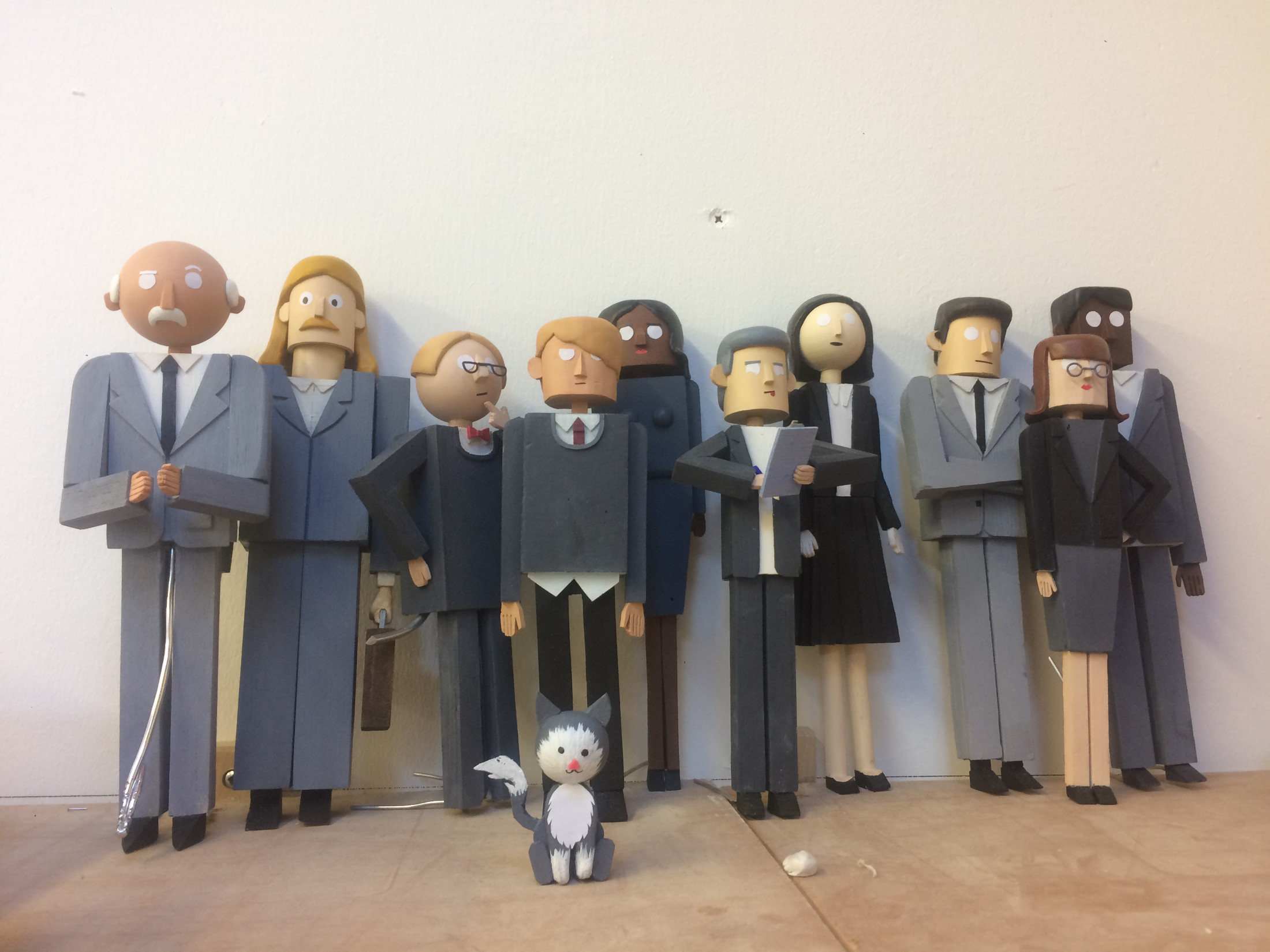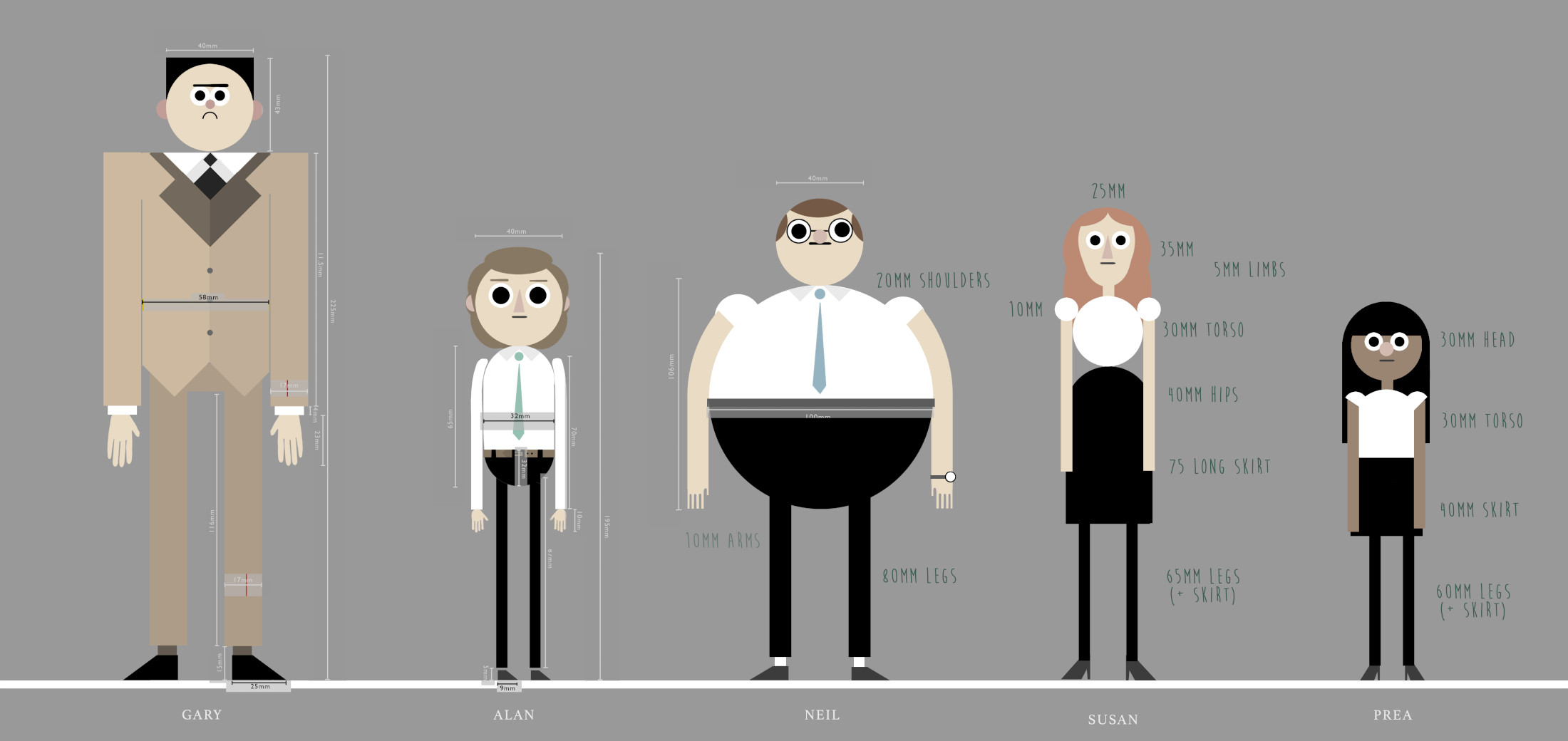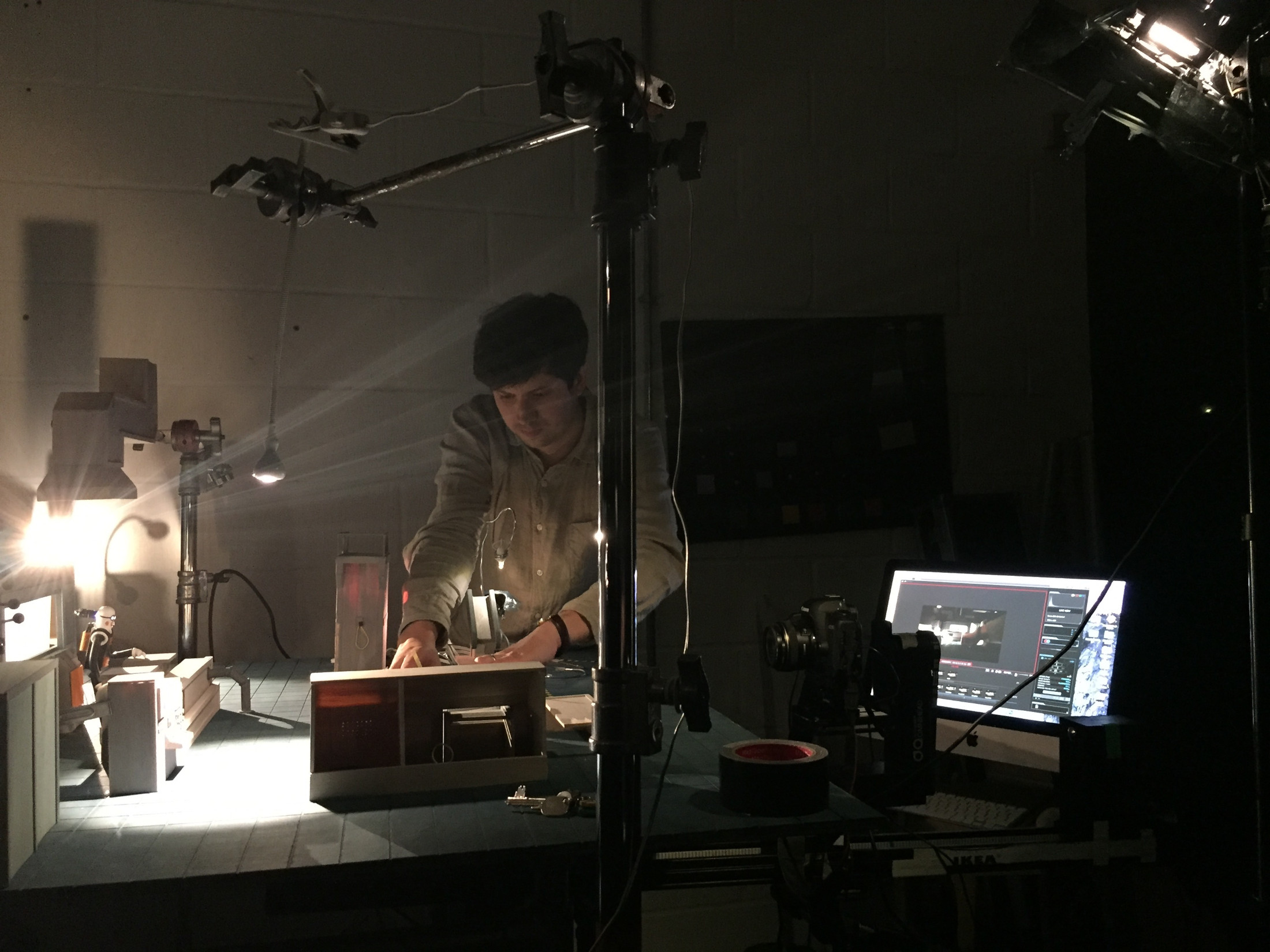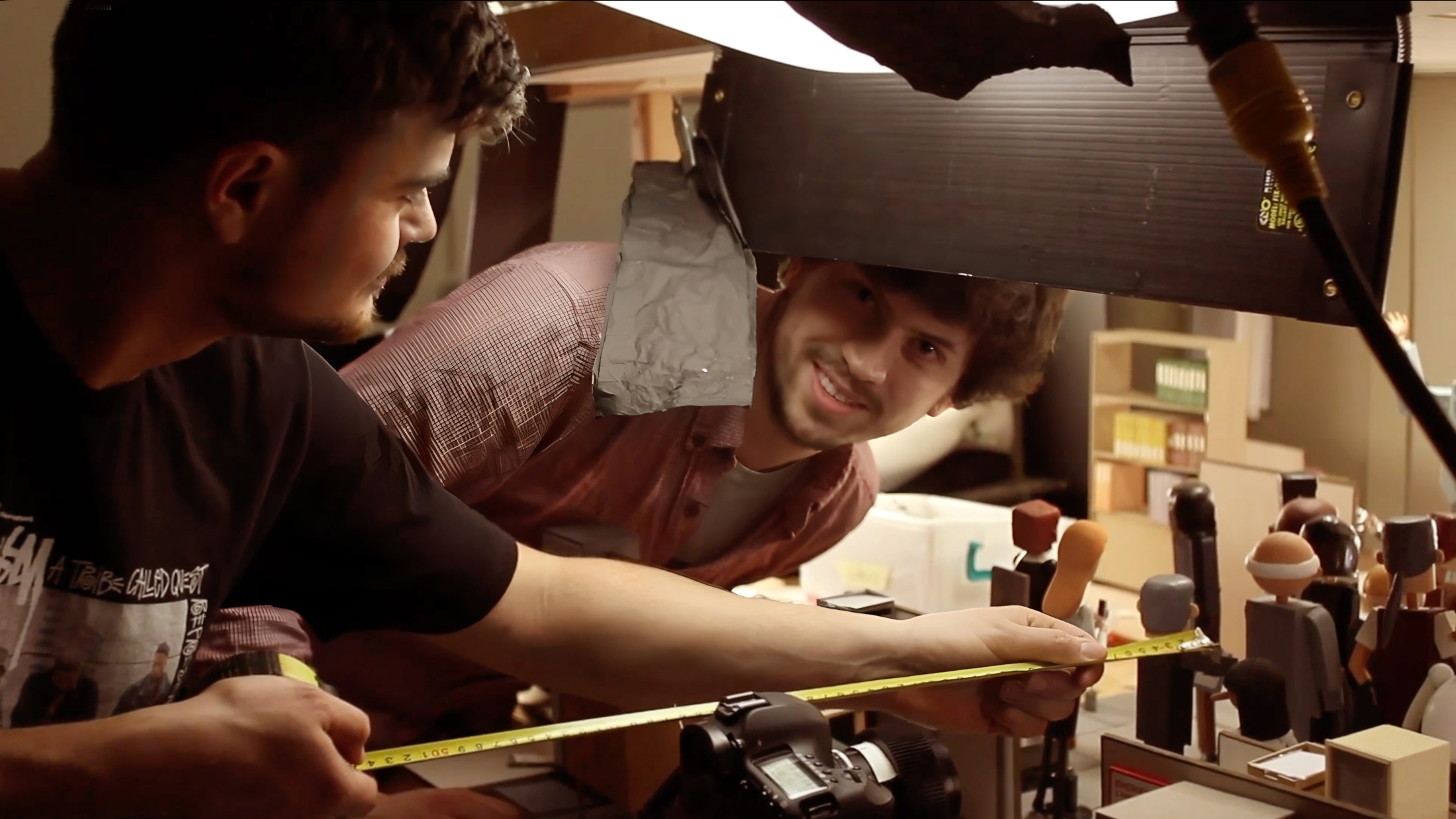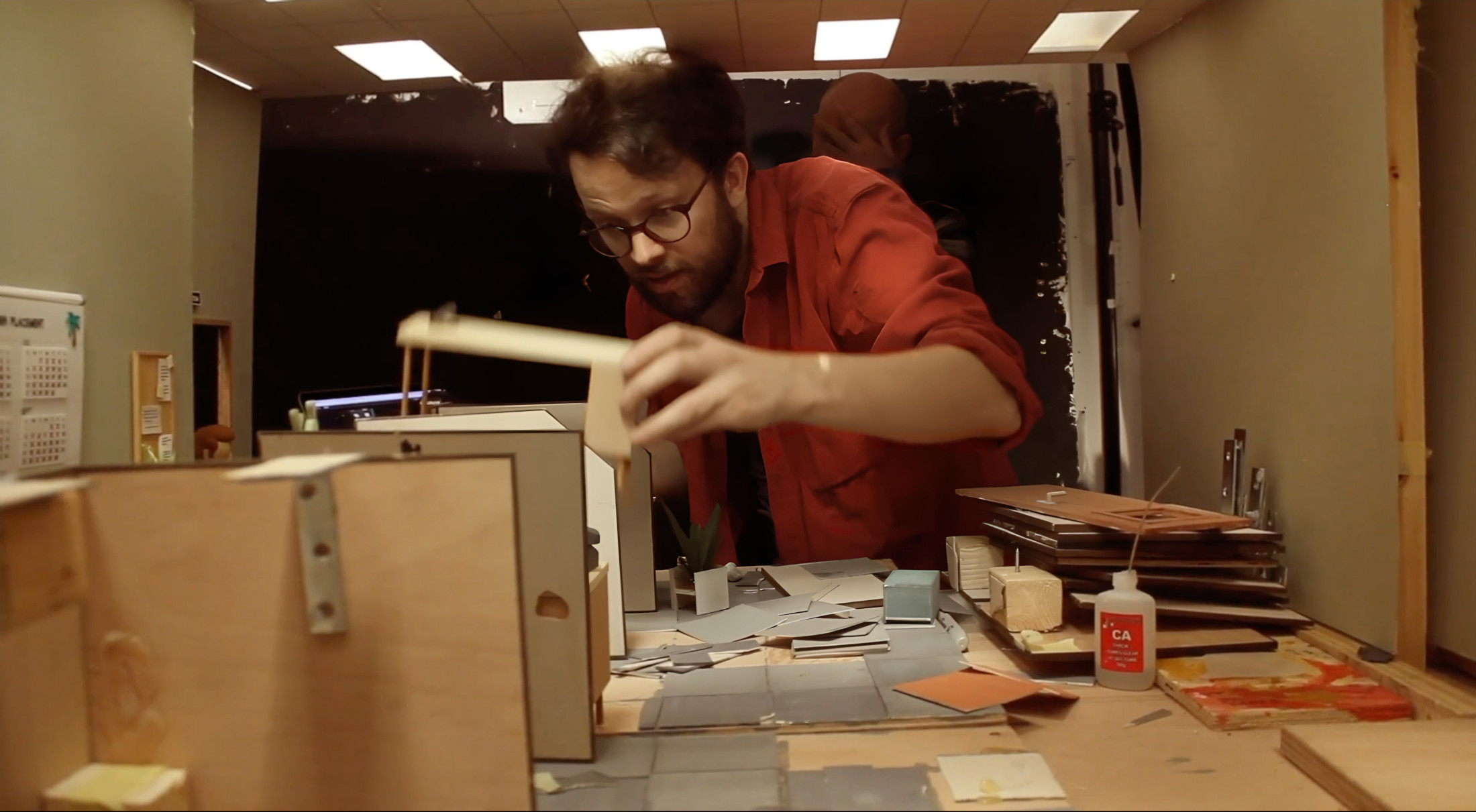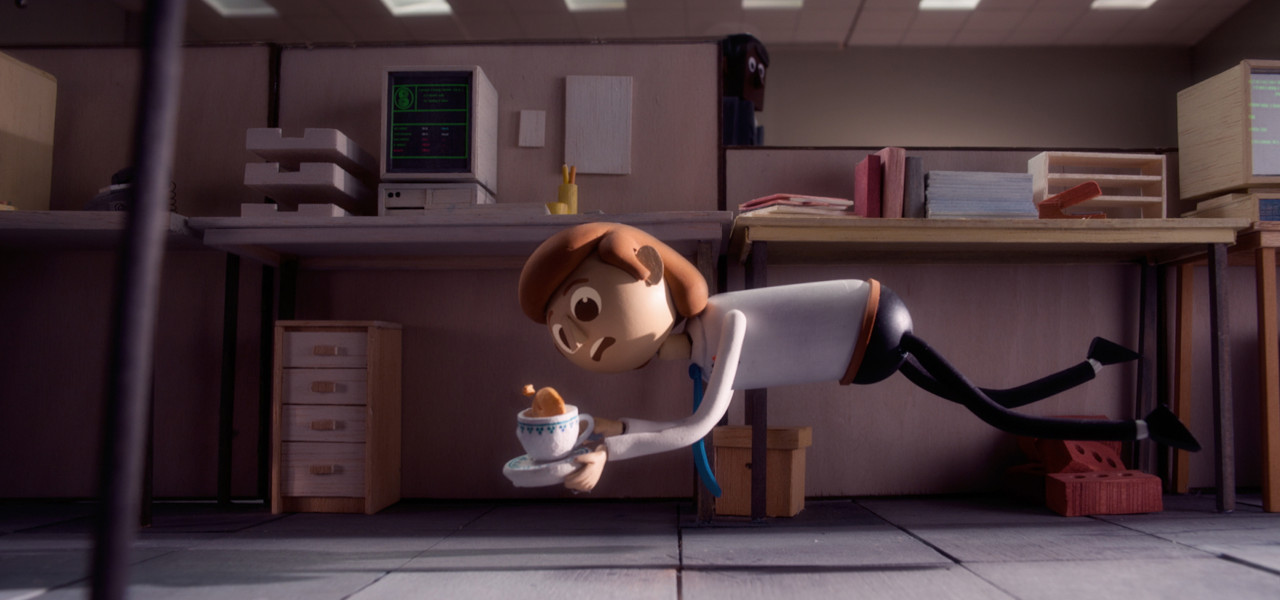
Alan The Infinite is a new short from Oscar-nominated Robin Robin directors Michael Please and Dan Ojari that strikes a playful balance between classic British stop-motion animation and workplace comedies.
The 10-minute short follows an epic, universe-altering storyline set in the most mundane place imaginable: the offices of a lamination company. Co-produced by Blink Industries and Parabella Studio, the film was shot in Please and Ojari’s Hoxton-based workshop, where they crafted the balsa wood characters and built charming sets.
We recently caught up with the filmmaking duo to discuss the long development and production road they traveled to put the short together, the possibility of revisiting Alan and his officemates in something longer-form, and the tools and techniques they used to create the unique aesthetic of Alan the Infinite. They also shared a bunch of behind-the-scenes artwork and really fun making-of video.
Cartoon Brew: So, despite coming out later, this project existed before Robin Robin. Can you tell me a bit about the origins of the idea for the short (and maybe eventually longer-form) film?
Dan Ojari: Robin Robin and Alan both grew out of our old studio, Parabella, at about the same time. Lots of late nights, the two of us throwing ideas at a wall. On our fateful trip to Annecy in 2018 to pitch Robin, we had Alan in the other pocket, but it was in a very unfinished state — no faces on the puppets, rough dialogue, no post — and probably a weird way to experience the film. I think it confused a lot of people. By the time we had actually finished it, Robin was well on her way.
Michael Please: The story grew out of an image Dan had sketched of an office worker accidentally setting off a tiny nuclear explosion behind a filing cabinet. We took those ingredients, the metaphysical and the mundane, and grew them into a story. The click came when we landed on the theme of change and the setting of Lamin’8– an institute obsessed with ‘the divine art’ of lamination. Suddenly, the world had this depth and history — misguided villains, conspiracies, occult science, and ancient cults, all framed around a coming-of-age teen romance. But it was Dan and I who had truly fallen in love (with the project, to be clear.)
When did you start production on Alan? And how long did it take to put the short together?
Please: Alan was a co-production with Blink Industries, who were brilliant collaborators. The film had a long and rather stop-start production. Our first attempt at a shoot (carbon-dated to around the time my son was born, to January 2017) was interrupted by needing to do a commercial production. It was frustrating but also a blessing since our attempts to animate the faces with replacement vinyl stickers were looking rather strange, not in a good way.
Ojari: We regrouped; Quintein Vein at Blink came up with a great pipeline for applying the 2d faces in the post, and we wrapped the shoot in February 2018, but the post went on until early 2019. Thus is the nature of these independent projects.
How did you settle on the look of the film? It’s got a bit of a classic U.K. stop-motion feel mixed with office sitcoms, yet it’s quite modern in the aesthetics of both the characters and the settings.
Please: I think Dan and I may have different answers here, both of which are true. I love applying the rules and language of illustration to stop motion — something about combining the clarity of graphic visual language and the cinematics of shooting through a real lens.
Ojari: That’s true for me, too, but I think I was also excited by the influence the materials had on the design choices, the use of wood, and the helpful limitations that come with that. We had boxes of offcuts – lots of primary shapes, ovals, cubes & spheres, and seeing what we could do with them was very satisfying and created a natural cohesion across the film.
The stop motion is a lot of fun in a way that will feel familiar to viewers, but the 2d facial animation is especially charming. Which tools/software did you use for production and post-production?
Ojari: Thank you! The pipe begins with our trusted friend Dragonframe (the stop-motion capture software).
Please: We then 3d tracked the motion of the heads and applied it to scans of the puppets, and then outputted that data as UV mattes that we could use in After Effects. The 2d animation was done from there, mostly so that I could see the compositing in real-time, making sure the eye lines matched up to the puppet positions. Nothing breaks my heart more than unfocused eye lines.
Any movement on continuing with the longer-form story idea that Alan is based on?
Ojari: We live in hope! There’s a feature script and treatment that go alongside the short, as, yes, Alan has more story to tell. It’s been wonderful getting him out into the world, and a few ripples are beginning to grow. Let’s hope they turn into waves!
Please: I got a very exciting email last week from a fragrance company saying they were “mesmerized by Alan the Infinite” and could I “imagine a scent that embodies (your) stop-motion projects.” I think it might have been an AI bot. I hope it was an AI bot. No one should want to smell the essence of my stop motion.
Discover more from reviewer4you.com
Subscribe to get the latest posts to your email.
